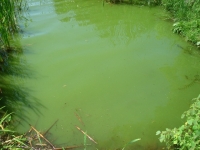 
Community Meeting re Wentworth
/
Carleton River
Watershed
Date: Tuesday June 1, 2010
Time: 6 to 8 pm
Location: Carleton Fire Hall
Reason for Meeting: ‘Next Steps’
An opportunity for people in our community to meet &
have a
conversation
with guests experienced in environmental issues and
concerned about
water
quality in the province, with a specific focus on
environmental
concerns
related to water quality in the Wentworth / Carleton
watershed, as well
as the new ‘Fur Industry Act’.
Invited Guests:
Lisa Mitchell, LJM Environmental Law & Consulting:
http://www.ljmenvironmental.ca/
Deborah Carver, Executive Director East Coast
Environmental Law:
http://www.ecelaw.ca/
Jocelyne Rankin, Freshwater Coordinator, Ecology Action
Center:
http://www.ecologyaction.ca/content/coastal-people
Gretchen Fitzgerald, Director Sierra Club Atlantic:
http://atlantic.sierraclub.ca/index_aboutus.htm
Steve Hawbolt, Executive Director Clean Annapolis River
Project:
http://www.annapolisriver.ca/
--- New
---
From: "John Horton"
<halleyhort@hotmail.com>
Date: Sat, 22 May 2010
20 May 2010
The Annapolis County Spectator
'Flawed' fur farm bill too hasty,
groups
claim
Say act leaves Nova Scotia watersheds open to
pollution.
A network
of environmental and community organizations are
objecting to the hasty
adoption of a flawed Fur Industry Act for Nova Scotia.
Bill 53 was
introduced
for First Reading on Thursday April 29 and was passed by
the House of
Assembly
on its Third Reading on Thursday, May 6. Although the
Department of
Agriculture
worked closely with the Nova Scotia Mink Breeders
Association for over
a year to develop this bill, members of the public,
including
members
of the affected communities were not consulted.
“It is ironic that a law intended to address community
concerns has
been pushed through without due consultation with those
communities or
environmental experts,” says Steve Hawboldt of the Clean
Annapolis
River
Project in a media release. “ The Act has value but
there are a number
of
changes that would have taken seriously the need to
ensure
environmental
protection and addressed community concerns..”
Community groups rallied last year when toxic ‘
blue-green’ algae
(cyanobacteria)
blooms occurred once again in the Wentworth / Carleton
River Watershed,
near Yarmouth. A March 2009 Nova Scotia Environment
study of nine lakes
in the affected watershed included the recommendation
that large
suspect
contributors of nutrients to the lakes (including mink
farms and a mink
food processing facility) should be further investigated
and where
appropriate
and possible, discharges reduced or eliminated.
"The intensity of mink farming has soared in the last
few years, in
fact there were 1.7 million mink processed in
Nova Scotia last
year
and mink in our province consume seven tractor trailer
loads of feed
every
day. This is big business with the ability to do
significant
environmental
damage,” says Gretchen Fitzgerald, executive
director, Sierra Club
Atlantic.
“ The industry is growing and if we are to ensure that
Nova Scotia’s
wetlands,
rivers and lakes are protected from the impacts of this
growth we must
have legislation that reflects that goal. Instead, we
have the Fur
Industry
Act, a law that leaves all decisions related to the
environmental
management
of the industry in the hands of its greatest promoter,
the Department
of
Agriculture. There is no oversight by other government
departments such
as Nova Scotia Environment or by members of the
public.”
The organizations were disturbed by the comments made in
the House
by the Minister of Agriculture, John MacDonell, when the
bill was
presented
for Second Reading debate. MacDonell thanked Clean
Annapolis River
Project,
Tusket River Environmental Protection Association,
Yarmouth County
Environmental
Justice Committee, Sierra Club Atlantic, Ecology Action
Centre, East
Coast
Environmental Law Association, and other stakeholders
for their
contribution
as the legislation was drafted.
“ We were not asked to make a contribution to the
development
of the
Fur Industry Act,” says Deborah Carver, executive
director, East Coast
Environmental Law Association. “It’s accurate that we
met with two
representatives
of the Department of Agriculture in April 2010, but we
were told that
the
bill was too far along in the process to present any
details.”
Members of the organizations submitted comments to the
Law Amendments
Committee that can be found at
www.gov.ns.ca/LEGISLATURE/committees/61_2_LACSubmissions/20100507.pd
f
The passage of the bill was so swift that it took the
organizations
by surprise and they did not attend the committee’s
deliberations on
May
5.
The organizations concerned are calling for the
Department of
Agriculture
to provide full and meaningful consultation during the
next stage of
regulatory
development to ensure high environmental standards and
public scrutiny.
They also are asking the department to conduct a full
cost accounting
of
the fur industry before further measures are taken to
promote more
growth
in the sector.
In their haste to pass Bill 53 before summer break the
NDP government forgot
the
value of democratic process and passed a law that
was developed
in a vacuum, said the release
Province
introduces new rules for mink farms
Published on
May 1st, 2010 Vanguard
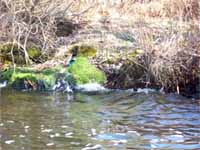 John
Horton John
Horton
: Date: Thu, 8 Apr 2010 06:34:27 -0700
April fools day, Nowlans Lake, Digby County. A runoff
pipe
carries 'undesirable'
water directly to the shoreline from the Mullen
mink farm at
Havelock.
Department of Environment officials recently
investigated this farm for
allegations of pollution....MORE!
John Horton: Mink stink Song video debuts on
YouTube....
A catchy ditty, Nobody's Listenin' written by John Horton
and performed
by Chett Buchanan and Family, appeared on YouTube
Sunday. The
song
is a light-hearted poke at the serious situation plaguing
Tusket-area
homeowners,
as offal from up to one million mink appear to be fouling
the region's
waterways with blue-green algae.
http://www.youtube.com/user/ShelburneNovaScotia#p/a/u/0/MT8fZZ1PuiY
Debbie Hall; Now this is
how to do
it!: Watercourse
and Wetland Protection Regulations,
1/ Publication "Beneficial
Management
Practics for
Riparian Zones in Atlantic Canada", Agriculture and
Agri-Food Canada: http://www.nr.gov.nl.ca/agric/soil_land_new/pdfiles/Beneficial.pdf
 
Pictures
from
Lake
Fanning (Debbie Hall) 2008
|
2009|
(Opens
in new
window)
Carlene MacDonald :Human
bisolds being spread on fields in Kings County
A WATER QUALITY SURVEY OF NINE LAKES
IN THE
CARLETON
RIVER WATERSHED AREA YARMOUTH COUNTY, NOVA SCOTIA
Prepared by Water & Wastewater Branch Nova Scotia
Environment
Darrell Taylor Project Lead March 18, 2009 (Copy
Pdf
Format)
|
A brief synopsis of
the
situation
here and the reason for this site is the
deteriorating
water quality in the Carleton watershed area.
Lakes at the
headwaters
are green year round with toxic Blue_green algae (
actually they are
bacteria
) known as Cyanophytes ( or cyanobacteria).
The problem is migrating
downstream and
will continue
to expand. Areas that were suitable for swimming
for 100's of
years
are now closed and these areas are no longer suitable
for normal human
activity. Areas around the source of this
pollution have a myriad
of environmental issues.
Now these mink factories are
expanding
in our
area. One in the Carleton area another possibly
in South Ohio,
which
feeds Lake Milo & Doctor's lake area.
Possibly 10+ more
are slated for construction in South West Nova
area.
Personally I am not against
agricultural
expansion
in the area, however with improper farming practices
and antiquated
regulations,
that were never meant to deal with such large scale
operations as
factory
farms, the result will be and already is
disastrous.
It is not fair to paint all mink
ranchers with
the same brush, but my position is: clean up the mess
you already have
before you expand. It now falls on
Municipal Council
to ensure that no further expansion occurs until the
present situation
is fixed and new methods are implemented to ensure
this dose not happen
again.
Some of the members of Council
are
farmers and
may feel a conflict of interest, but let me assure you
their is no
conflict.
You and your forefathers have farmed areas such as
Chebogue and
Chegoggin
for 100's of years and you have done it in relative
harmony with
nature.
What has gone wrong with some of the
mink ranches is not
characteristic of most farms in our area. However: if
a solution is not
found, the modest economic benefit of this industry
will pale in
comparison
to the to the negative environmental, economic and
social repercussions.
In all fairness to the mink
industry, Mr
Prime,
admitted that their were some problems and that
somethings had to be
changed.
|
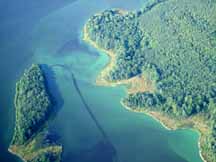
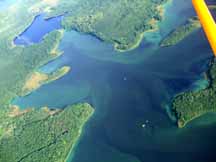

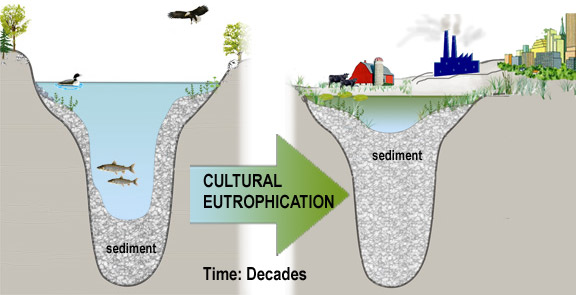

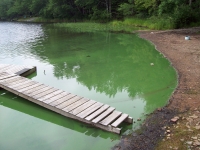
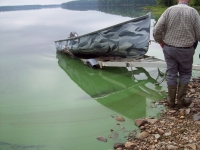



 John
Horton
John
Horton 

